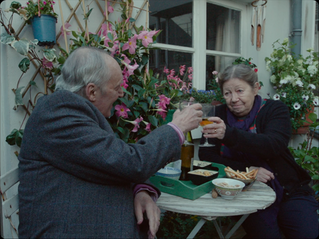Never Rarely Sometimes Always
- Jessica Moore

- Feb 5, 2021
- 2 min read
Eliza Hittman, 2020

Autumn is seventeen, an age visualised rather temperately. Interactions with members of her age group are limited, the mundanity of her days are adjacent to the cinematically embellished depictions of adolescence, and most inconsistent of all, she faces an unexpected pregnancy.
Places certainly reify their own hostility. Born into an under-funded small town in rural Pennsylvania, and to the discouragement from local nurses and the state’s legislation, Autumn learns that where she lives, abortion is not viewed as a solution. Worse yet, because Autumn is a minor and thus unable to proceed with an abortion without parental consent, abortion is rebutted as an option entirely. To discern its social accuracy, the film’s impact absolutely depends on its audience’s familiarity with the cultural context of pro-life ideology, yet Autumn’s experience of unwanted pregnancy is not overtly politicised—at least not by Autumn. As the living example of notional debate, Autumn does not heroically confront moral politics, she urgently moves along towards a more liberal space; she prioritises her own trajectory.
This space is New York City, and, more specifically, the abortion clinics littered through its boroughs. Autumn and her quietly sympathetic cousin, Skylar, wander pennilessly through the city for two days and two nights without anywhere to stay; their experience scarcely traced along a timeline of infrequent appointments to complete the abortion, to the unshakeable accompaniment of a male drifter.
Men occupy very specific roles throughout the film: a neglectful step-dad, bullish school-peers, a sexually exploitative manager, men who expose themselves on public transport, even the sleazy drifter who tours the girls around karaoke bars. Despite their recurrence, they are all peripheral. This is not because their impacts are minimal nor their presence unfelt, far from it, but because the accumulation of their violence pushes Autumn inward; their omnipresence does not drown out their influence, it surmises its stronghold.









Comments